- DegeTools Pump Air Wedge Airbag Tools,for Windows Install 4 Pack
- Opel ID40 Chip Carbon
- HOT KLOM Cordless Electric Lock Pick Gun Auto Lock Picks Tools Pick Guns Lockpicking Lock Pick Set Locksmith Tools
- Lexus TOY48 3 Button Remote Key Shell(41mm)
- Lishi HU64 2 in 1 Mercedes Pick And Reader
- VW Audi HU66 Inner Groove Lock Pick
- BMW X5 Left Door Lock
- Keymam Lock Pick With Light(B) For Sell This Month
- Credit Card Lock Pick Set - Secure Pro Credit Card-Sized Lock Picking Set - Emergency Lockpick Card
- DegeTools Pump Wedge Air Wedge Airbag Tools,for Locksmith 4 Pack
Inside a Combination Lock
by Marshall Brain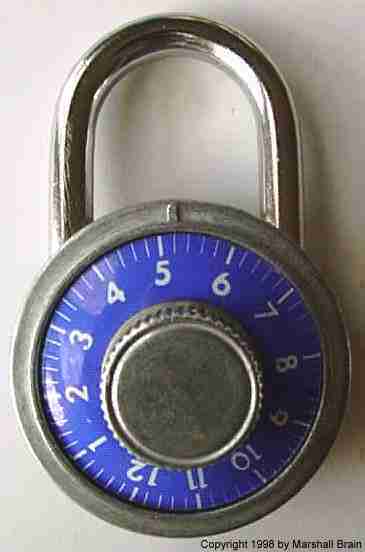
You see combination locks every day, but have you ever stopped to think what is inside? In this article, we'll unlock the secrets of a combination lock! Here is the lock we will be exploring:
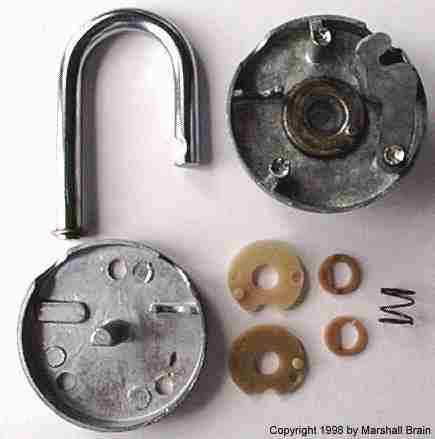
Getting inside a lock is not always easy. If it were easy, it would defeat the purpose of using the lock in the first place! But once you do get inside you find a collection of parts like this:
There are three cams in a typical combination lock. In this lock one of the cams is metal and is bonded directly to the turning face of the lock. The other two cams are plastic. There are two plastic spacers that fit between the cams:
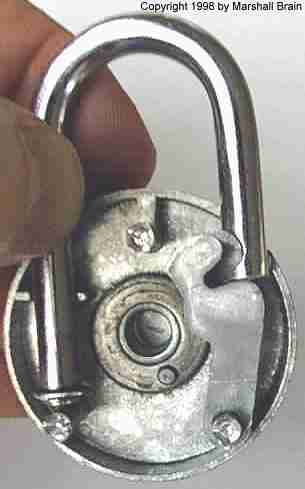
They fit on a shaft molded into the back of the lock with a spring pressing the stack of cams together when the lock is assembled. The spring provides friction between the cams to hold them in place.
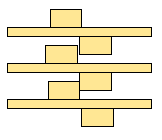
The cams each have one tooth on each side, and these teeth engage as the cams rotate:
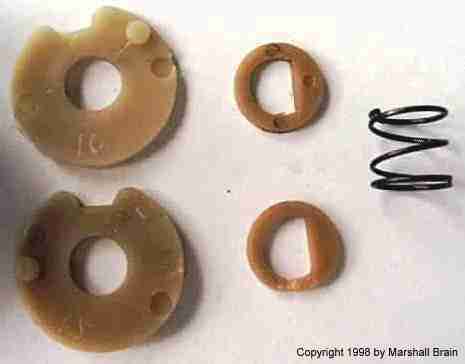
The purpose of the cams is to control a latch that engages the end of the lock's hasp. The cams each have an indentation in them. When the indentations align properly the latch is able to fit into the indentations and release the hasp:
Otherwise the latch engages the hasp like this:
If you have used a combination lock before you know the drill: "Turn the dial clockwise two full rotations to the first number of the combination. Then turn it counter-clockwise past the first number to the second number. Then turn the dial clockwise to the third number and the lock will open." You can now see why you have to do that. Turning the dial 2 full revolutions gets the teeth of all three cams engaged, so the three cams are turning in unison. Now when you turn counter-clockwise only the top cam is rotating. As you go past the first number, the first cam's tooth engages the second cam, so now the two cams are moving. The friction provided by the spring, however, keeps the third cam in its position. When you turn the dial clockwise again, only the top cam rotates. Once all three indentations are aligned properly by this process, the lock opens.
You could, in theory, stack up 4 (or 10) cams if you wanted to. It would make for a tedious session opening the lock, but it would certainly be secure!
